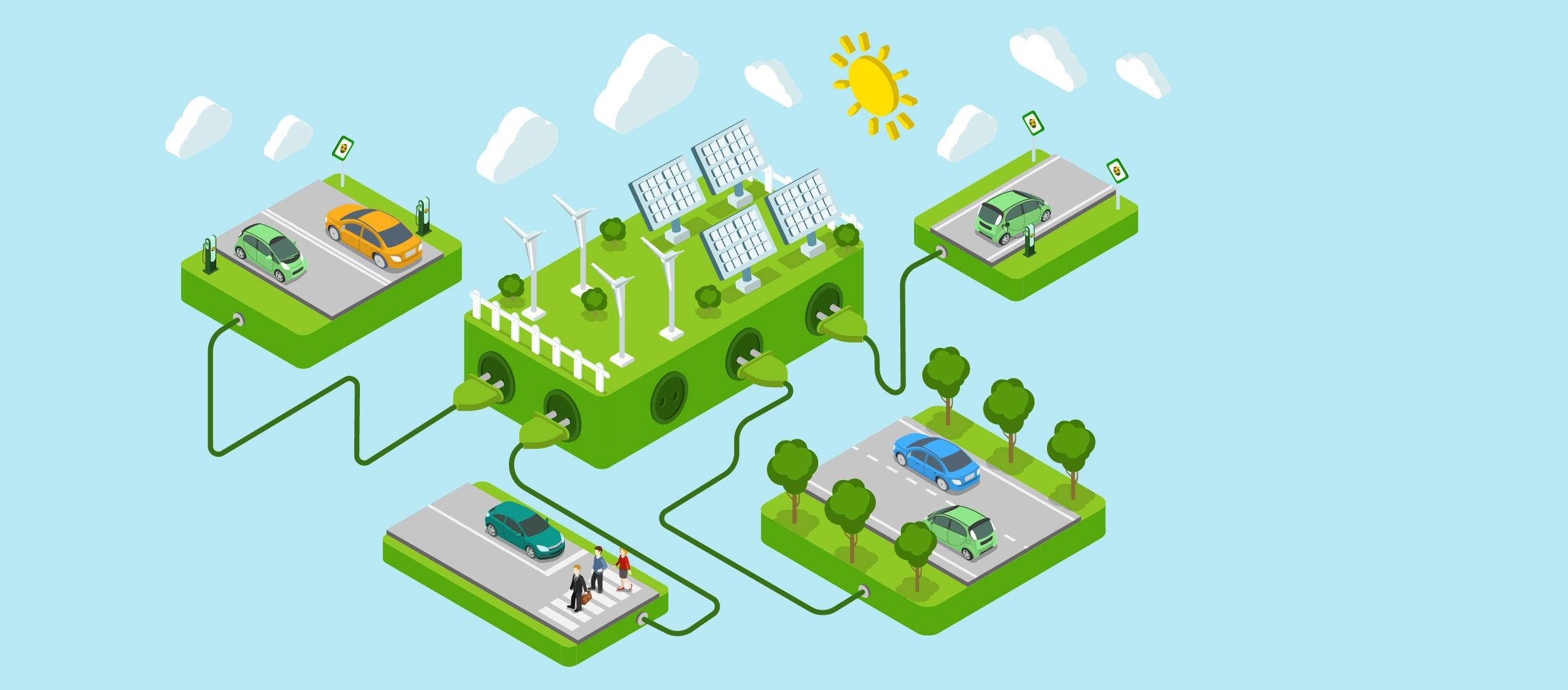
Energy communities: opportunities and challenges for a shared energy transition
9 December 2021What are energy communities and how and why can they become the key to a shared energy transition? Antonluca Loteta, Head of Distributed Generation & Energy Community Innovability at Enel X tried to answer these and other questions on the topic of energy for a sustainable future during a meeting presented by Professor Matteo Mura, Director of Executive e Full-time Master in Sustainability Transition Management at BBS.
An energy community, Loteta explained, is a real legal entity, made possible by the new European directives on the subject of energy. Within energy communities, users unite to share energy obtained from renewable sources. In this way, citizens can evolve from simple energy users to energy producers, thanks to adhering to a new Green Economy model that transforms users from consumers into prosumers. Those who participate in energy communities, in fact, do not limit themselves to consuming energy, but produce and consume only a part of it, putting the remaining portion on the grid and exchanging with other consumers, generally close to those who produce. This part of the energy produced can also be stored in a system managed by an operator and then fed back into the grid for consumption when it becomes necessary. Autonomy and economic advantages are the most immediate benefits for those who choose to join a phenomenon that is clearly growing in Europe. Italy is among the European countries that have best implemented the European Renewable Energy Directive (RED) and in which the phenomenon of Renewable Energy Communities (REC) are also growing.
In 2019, the EU approved a package of laws called the Clean Energy Package (CEP), which includes eight Directives useful for regulating certain energy issues, including the electricity market, renewable energy and performance. energy in buildings. To date, in Italy the theme of collective consumption is developed through a community of consumers (SMEs, residential or condominiums) who get their supplies through one or more plants powered solely by renewable sources. Individuals participating in an energy community must produce energy for their total power consumption not exceeding 200 kW. At the moment we are still in an experimental phase in Italy, but recently we have learned that there will be changes in the law that regulates the energy communities and soon we will be able to see an increase in the allowed voltages and in the overall power, which will reach up to 1 megawatt, even with a view to a greater involvement of businesses.
The renewable energy community can be formed by consumers who are under the same medium / low voltage transformer substation. This for the moment, although soon, as anticipated, we will be able to talk about higher voltages. Those who participate can choose the supplier they prefer on the market and leave it whenever they want: participation is open to everyone, regardless of income and consumption, and free from constraints. It also does not affect the rights of each consumer. Energy suppliers such as Enel X are responsible for contributing to the management of both the constitutive and contractual part of the Community, as well as the technological and production and consumption management parts in order to optimize the network in the interest of all those who participate in it.
The energy shared within the energy community is equal to the minimum, in the one-hour interval, between the electricity produced and fed into the grid by the community’s plants and the electricity taken from the grid by all members that are part of it. Energy is considered shared, albeit in a virtual way, for instant self-consumption also through the storage systems. There is an incentive rate that remunerates self-consumed energy instantly which can be combined with tax deductions, where available. The rule also provides that some items in the bill are returned in the face of the avoided transmission of energy in the network that these systems allow. Reliefs and incentives are due to the Italian and European sustainability policies that are committed to involving citizens in a more shared and responsible consumption, transforming itself from a consumer, therefore, passive, to prosumer, therefore active.
Collectivizing renewable energy resources makes it possible to influence and optimize the production and consumption of energy, facilitating the transition to a community capable of transforming itself into a resource for all those who are part of it. Guidelines in this regard are included in both the Green New Deal and the 2030 Agenda. Pending joining ever larger and more structured energy communities, we can immediately begin to require that the energy we consume derives only from renewable sources.
The meeting was open to participants of several BBS Masters, not only those strictly related to Sustainability, with a view to an ever-increasing dissemination of information useful for the creation of new sustainable business models. In fact, the following took part: Global MBA, Executive MBA English Edition, Hybrid MBA English Edition, Master in Sustainability Transition Management, Executive Master in Sustainability and Business Innovation, International Professional Masters.
